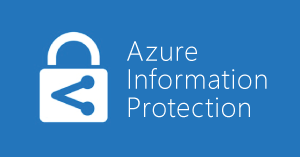In today’s data-driven world, protecting sensitive information is critical. With the rapid adoption of cloud computing and remote work, organizations are increasingly exposed to data security threats. Azure Information Protection (AIP), a Microsoft cloud-based solution, plays a pivotal role in classifying, labeling, and protecting documents and emails based on their sensitivity.
Firstly, AIP is available in two premium tiers: Premium P1 and Premium P2. Both tiers offer robust security features, but they are tailored to different organizational needs. Secondly, in this blog, we’ll break down the key differences and help you decide which plan might be right for your business.
What Is Azure Information Protection?
Azure Information Protection is part of Microsoft Purview and is designed to help organizations:
-
Discover and classify sensitive information.
-
Apply labels and policies manually or automatically.
-
Encrypt, restrict, and monitor access to data.
-
Meet compliance requirements with built-in governance tools.that
That being said, labels applied through AIP can persist with the data, ensuring protection stays with the file—whether it’s stored in the cloud, shared through email, or saved locally.
Azure Information Protection Premium P1
Azure Information Protection Premium P1 is ideal for organizations that need core information protection capabilities. It includes:
-
Manual and automatic classification and labeling: Users can apply labels themselves, or policies can trigger automatic labeling based on content.
-
Protection using Rights Management: Data is encrypted and access is restricted based on the label applied. For example, you can restrict a document to only be read, or prevent forwarding an email.
-
Document tracking and revocation: Users can monitor document access and revoke it if shared inappropriately.
-
Integration with Microsoft 365: Seamless integration with Outlook, Word, Excel, and PowerPoint.
Hence, P1 is a solid choice for businesses that require a reliable and easy-to-implement method for protecting sensitive data without diving into complex analytics or automation workflows.
Azure Information Protection Premium P2
Azure Information Protection Premium P2 includes all P1 features, plus more advanced capabilities aimed at large enterprises or organizations with strict compliance requirements. P2 includes:
-
Automatic classification using content inspection: P2 can inspect the contents of files and emails to detect sensitive information such as credit card numbers or national ID numbers, then apply labels automatically.
-
User-defined conditions: Admins can create complex rules and policies to classify data based on business-specific conditions.
-
Hold Your Own Key (HYOK) support: Allows organizations to retain full control of encryption keys, important for highly regulated industries.
-
Advanced logging and analytics: Enhanced visibility into how data is being used and shared across the organization.
Therefore, P2 is suited for organizations that need to deeply integrate information protection with broader security strategies, including data loss prevention and compliance monitoring.
Choosing Between P1 and P2
Hence, when deciding between P1 and P2, consider your organization’s size, data sensitivity, regulatory requirements, and security maturity level.
-
Choose P1 if your organization needs a strong but straightforward solution for classifying and protecting data.
-
Choose P2 if you require advanced automation, deeper analytics, and tighter control over data security policies.
Final Thoughts
In conclusion, protecting sensitive information isn’t optional in the modern business environment—it’s a necessity. Above all else, Azure Information Protection Premium P1 and P2 offer flexible, scalable solutions to help secure your data and meet compliance needs. Evaluate your organization’s requirements carefully and leverage Microsoft’s powerful tools to ensure your information stays protected—wherever it goes.
Inquiries
-
Website: https://techsolworld.com/
-
For any inquiries, please call: (800) 998-2792
-
Email – info@techsolworld.com
